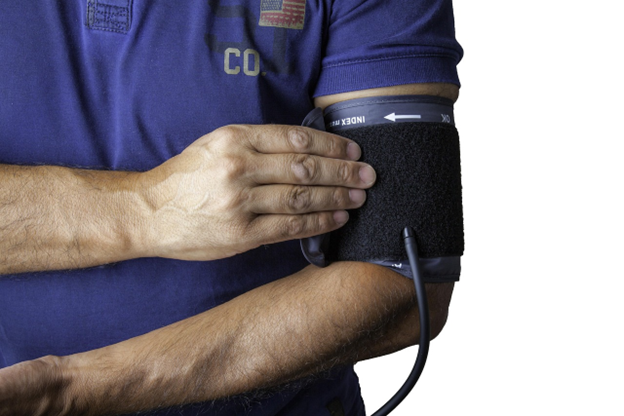What is Systolic Heart Failure?
Systolic heart failure occurs when the heart’s main pumping chamber, the left ventricle, is unable to contract strongly enough to push blood throughout the body. This reduced pumping ability means less oxygen is delivered to the organs and tissues, often leading to fatigue, breathlessness, and swelling in the lower limbs.
It usually happens because the heart muscle has been damaged, and thanks to culprits like high blood pressure, clogged arteries, or even a past heart attack. Imagine your heart is saying: “Bro, I’m exhausted from overwork.”
Understanding the different forms of systolic heart failure can help explain how it affects people in both the short and long term.
Types of Systolic Heart Failure
Systolic heart failure does not present in the same way for everyone. Broadly, it can appear suddenly or progress gradually over time.
Acute Systolic Heart Failure
Imagine your heart hitting a sudden rough patch like the moment after scrolling through stressful work emails, but multiplied. Acute systolic heart failure comes on suddenly, usually after a big trigger.
- Common Triggers: Heart attack, uncontrolled BP, sudden strain
- Symptoms: Breathlessness out of nowhere, swollen ankles that no socks can hide, extreme fatigue (your body running on 1% battery), and irregular heartbeats
Because it develops so quickly, acute heart failure is considered a medical emergency and usually requires immediate hospital care.
Chronic Systolic Heart Failure
Chronic systolic heart failure, on the other hand, progresses slowly, often over months or years. It is usually linked to long-standing conditions such as coronary artery disease or hypertension.
- Symptoms: At first, you’re just breathless on stairs, then later while walking, and eventually even at rest. Add in swollen feet, constant tiredness, and sometimes a nagging cough, and it starts feeling like your body’s running on low power.
While less dramatic than acute failure, the chronic form demands long-term management to slow progression and improve quality of life. To understand why these conditions arise, it helps to look at the underlying causes.
Causes of Systolic Heart Failure
Several villains can weaken the heart’s pumping ability:
- Coronary Artery Disease (CAD): When arteries are narrowed or blocked, less oxygen reaches the heart muscle. It’s like trying to sip a thick milkshake through a clogged straw, frustrating and tiring for the heart.
- Heart Attack: When a blockage cuts off blood flow, part of the heart muscle is permanently damaged.
- High Blood Pressure (Hypertension): Constantly elevated pressure forces the heart to pump harder. At first, the muscle thickens to cope, but eventually it becomes too strained and loses strength.
- Cardiomyopathy: A fancy word for heart muscle diseases. Structural changes in the heart muscle, such as enlargement, thickening, or weakening, interfere with the way the heart pumps blood.
- Valvular Heart Disease: The heart’s valves act like one-way doors for blood flow. When they don’t open or close properly, the heart must work harder, which increases stress on the ventricle.
- Arrhythmias (Abnormal Heart Rhythms): An irregular heartbeat disrupts the heart’s natural rhythm. Over time, this reduces pumping efficiency and weakens the muscle.
- Infections: Certain infections, such as viral myocarditis, can cause inflammation of the heart muscle, leading to impaired LV function and heart failure.
- Diastolic Dysfunction: The heart muscle becomes stiff and cannot relax properly, limiting how much blood fills the ventricle. Over time, this adds strain and contributes to systolic failure.
- Substance Abuse: Excessive use of alcohol, drugs, or stimulants can directly damage the heart muscle and interfere with its rhythm and function.
- Other Risk Factors: Conditions such as obesity, diabetes, and long-term stress on the cardiovascular system significantly increase the likelihood of systolic dysfunction.
Symptoms of Systolic Heart Failure
Recognising the symptoms early can make a significant difference in outcomes. They may vary from mild discomfort to severe limitations in daily life. Common signs include:
- Fatigue: Even walking to the fridge feels like leg day.
- Shortness of Breath: When lying flat (Netflix-in-bed becomes a wheeze-fest).
- Reduced Exercise Tolerance: Everyday activities like climbing stairs or walking short distances become difficult due to the heart’s decreased pumping ability.
- Swelling (Oedema): Ankles, legs, and sometimes the belly puff up like water balloons.
- Persistent Cough: Sometimes producing pink or frothy mucus.
- Rapid/Irregular Heartbeat: Feels like your heart is “buffering” instead of beating.
- Sudden Weight Gain: Usually due to fluid retention.
- Dizziness/Fainting: Resulting from reduced blood flow to the brain.
- Reduced Appetite: Food doesn’t sound good when your body’s energy is low.
Diagnosis & Tests
Doctors typically combine patient history, physical examination, and diagnostic tests to make an accurate assessment. Key steps include:
- Medical History & Exam: Your doctor asks about symptoms, lifestyle, and family history, then looks for swollen ankles, odd heart sounds, fast or irregular beats, and lung crackles.
- Blood Tests: B-type natriuretic peptide (BNP) or N-terminal pro-B-type natriuretic peptide (NT-proBNP) rise when the heart’s under stress, like your body’s built-in alarm system.
- Echocardiogram (Echo): Often considered the most important test. It uses sound waves to show how well the heart pumps blood. An ejection fraction (the percentage of blood pumped out of the left ventricle) below 40 percent often points to systolic failure.
- Electrocardiogram (ECG): Records the electrical activity of the heart to detect rhythm problems or evidence of a past heart attack..
- Chest X-ray: Gives a quick look at heart size and whether fluid has built up in the lungs.
- Cardiac Magnetic Resonance Imaging (MRI) / Computed Tomography (CT) Scan: When doctors want a hi-res, zoomed-in picture of your heart, they go for these. They can check the size of your heart chambers, muscle thickness, and blood flow, kind of like switching from regular TV to 4K streaming.
- Exercise Stress Test: Sometimes, doctors want to see how your heart handles pressure. You hop on a treadmill or bike, and they track your heart’s response.
Treatment for Systolic Heart Failure
Managing systolic heart failure isn’t just about “fixing the heart” it’s about making life easier, slowing down the condition, and cutting down risks. The plan looks different for everyone, but here are the main routes doctors usually take:
- Medications: These are the real game-changers. ACE inhibitors, ARBs, beta-blockers, diuretics, and aldosterone antagonists all play different roles while lowering blood pressure, cutting fluid overload, and giving your heart some breathing room.
- Lifestyle Changes: This part’s on you, and it’s less scary than it sounds. Reducing salt (goodbye, extra chips), moving your body regularly, managing weight, and ditching cigarettes all take stress off the heart. Small swaps → big wins.
- Cardiac Rehab: Structured programs that blend exercise with education. Imagine having a gym session where trainers also coach you on how to eat, recover, and manage stress, but all designed for your heart.
- Implantable Devices: For some, devices like cardioverter-defibrillators (ICDs) or cardiac resynchronisation therapy (CRT) are recommended. These little tech marvels sit inside the body and keep your heart rhythm steady.
- Surgery: When blockages or valve issues are the main culprits, bypass surgery or valve repair/replacement can restore smoother blood flow. More serious, yes, but sometimes it’s the reset button the heart needs.
- Heart Transplant: In the most severe cases, when nothing else works, a heart transplant may be the option. It’s rare, but it can completely change the game.
Conclusion
Systolic heart failure is serious, but early recognition and proper care can preserve quality of life. Caused by a weakened left ventricle, it can be managed effectively through awareness of symptoms, timely diagnosis, and long-term treatment, helping individuals maintain heart health and overall well-being.
FAQs About Systolic Heart Failure
-
What is the life expectancy with systolic heart failure?
Life expectancy varies from person to person. It depends on several factors such as age, overall health, how early the condition is diagnosed, and how well it is managed. With proper treatment, lifestyle changes, and regular medical follow-ups, many people are able to live for years while keeping the condition under control.
-
Can systolic heart failure be reversed?
“Reversed” might be too strong a word, but it can often be stabilised and improved. Medications, exercise (yep, the right kind), and food choices can help your heart pump more efficiently. The focus is usually on improving the quality of life and slowing down progression rather than a complete reversal.
-
What is a normal ejection fraction?
Ejection fraction (EF) sounds technical, but it’s just a measure of how much blood your heart pumps out with each beat.
- Normal EF: 50 to 70%
- Systolic heart failure: usually < 40%
In simple terms, EF is like your Wi-Fi signal. A strong one (50 to 70%) = smooth streaming. A weak one (< 40%) = constant buffering.
-
How is systolic different from diastolic heart failure?
Systolic heart failure happens when the heart muscle cannot contract strongly enough, so less blood is pumped out to the body. Diastolic heart failure, on the other hand, occurs when the heart muscle becomes stiff, making it difficult for the chambers to fill properly. In both cases, blood flow is reduced, but the underlying problem differs — weak pumping versus stiff filling.
-
Can I exercise with systolic heart failure?
Most times, yes, but it’s about smart movement, not running marathons tomorrow. Walking, light cycling, yoga, or gentle strength work can actually help your heart get stronger. It is always important to follow your doctor’s advice before starting or changing an exercise routine.
Disclaimer
The information contained in this article is to educate, spread awareness in relation to hypertension and other diseases to the public at large. The contents of this article are created and developed by BPinControl.in through its authors, which has necessary, authorisations, license, approvals, permits etc to allow usage of this articles on The Website. The views and opinions expressed in this article are views, opinions of the respective authors and are independently endorsed by doctors. Although great care has been taken in compiling and checking the information in this article, The Website shall not be responsible, or in any way liable for any errors, omissions or inaccuracies in this article whether arising from negligence or otherwise, or for any consequences arising therefrom. The content of this article is not a substitute for any medical advice. The Website shall not be held responsible or liable for any consequence arising out of reliance on the information provided in the article.




